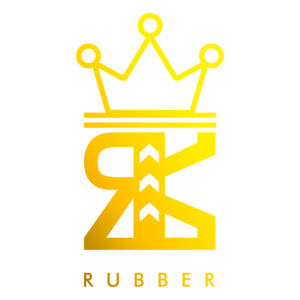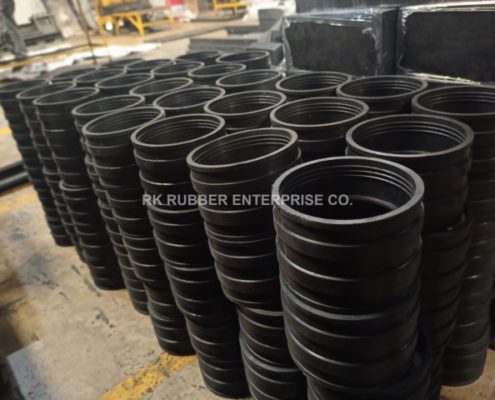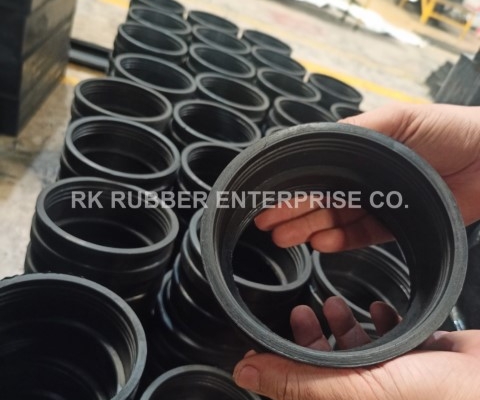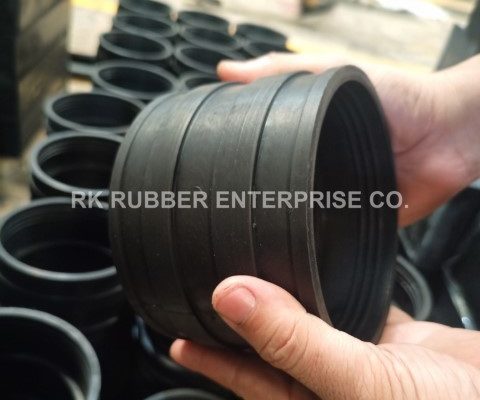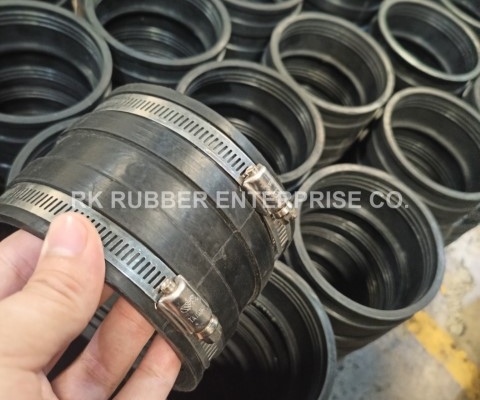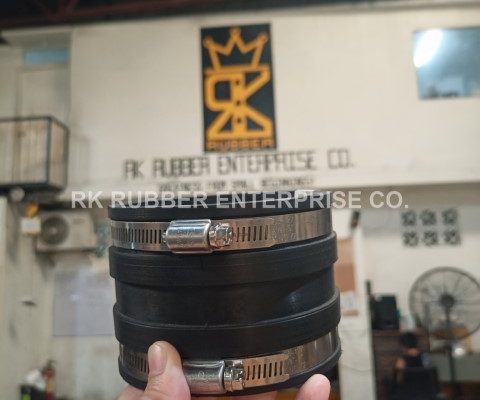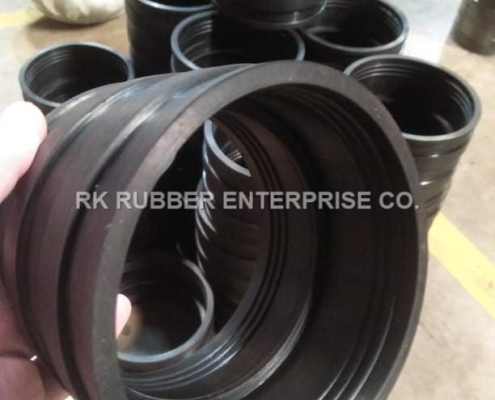What is a Rubber Connector?
We’re excited to introduce you to RK Rubber Enterprise Co., your go-to rubber connector manufacturer in the Philippines. At RK Rubber, we understand the importance of quality and reliability in rubber connectors in various industries. With our expertise and state-of-the-art manufacturing process, we offer a range of customizable options that meet your specific needs. Whether it’s for industrial applications or everyday use, trust us to provide expert advice and top-notch products for your safety. Contact us today for all your rubber connector needs!
Key Takeaways
- RK Rubber Enterprise Co. is a trusted manufacturer of rubber connectors in the Philippines.
- Rubber connectors provided by RK Rubber Enterprise Co. offer secure and flexible connections, accommodating movement and vibrations without compromising integrity.
- The rubber connectors are chemical-resistant, making them suitable for corrosive environments.
- RK Rubber Enterprise Co. offers customization options for rubber connectors, ensuring precise fitting and compatibility for various industries and applications.
The Importance of Rubber Connectors in Various Industries
Rubber connectors are essential in many industries because they provide a secure and flexible connection. These connectors offer several advantages, making them an ideal choice for various applications. One of the main advantages is their flexibility, allowing them to accommodate movement and vibrations without compromising the connection’s integrity. They also provide excellent resistance to chemicals, ensuring safety in industries where exposure to corrosive substances is common.
Another advantage is their customization options, which allow for precise fitting and compatibility with different equipment and systems.
Rubber connectors find applications in various industries, including automotive, aerospace, manufacturing, and construction. In the automotive industry, rubber connectors are used in exhaust systems to absorb vibrations and reduce noise transmission.
In aerospace applications, they ensure reliable connections that can withstand extreme temperatures and pressure changes. In manufacturing plants, rubber connectors are utilized for fluid transfer between machines or equipment components. Furthermore, these connectors are widely used in construction projects for plumbing systems.
Rubber connectors play a crucial role in various industries by providing secure connections with flexibility and customization options that cater to specific requirements.
Advantages of Choosing RK Rubber Enterprise Co. as Your Rubber Connector Manufacturer
Regarding your rubber connector needs, you’ll appreciate the advantages of choosing RK Rubber Enterprise Co. as your go-to manufacturer in the Philippines. We offer a range of benefits that prioritize safety and efficiency for our customers. One advantage is our customization options. We understand that every industry has unique requirements, so we provide tailored solutions to meet your needs.
Our team of experts is always available to provide professional advice and guidance throughout the process. Whether you need connectors for plumbing systems or industrial machinery, we have the expertise to ensure proper functionality and durability. With RK Rubber Enterprise Co., you can trust our commitment to delivering high-quality rubber connectors designed with safety in mind.
Quality Assurance and Manufacturing Process of Rubber Connectors
As a customer, you’ll be glad to know that our connectors’ quality assurance and manufacturing processes prioritize safety and efficiency. Our manufacturing process starts with sourcing high-quality rubber materials to ensure product durability. We have stringent quality control measures, from material selection to final assembly, at every stage.
Each connector undergoes rigorous testing to meet industry standards and exceed customer expectations. Our skilled technicians use state-of-the-art equipment and advanced techniques for precise manufacturing. We also conduct regular inspections and audits to maintain consistency and improve our processes continually. The result is a range of rubber connectors that are reliable and safe for various applications. Trust us for top-notch quality connectors that will provide long-lasting performance while ensuring the safety of your operations.
Customization Options for Rubber Connectors to Meet Your Specific Needs
You’ll be pleased that we offer various customization options for our connectors to meet your needs. At RK Rubber Enterprise Co., we understand that every project has unique requirements, and we are committed to providing tailored solutions for your safety. Our customization options include various sizes, shapes, materials, and finishes to ensure compatibility with your specific application. Whether you need connectors for electrical systems, plumbing installations, or industrial equipment, we can customize them according to your specifications.
Our team of experts will work closely with you to understand your requirements and recommend the most suitable customization options. With our commitment to quality and safety, you can trust us to deliver perfectly tailored connectors to meet your needs.
Applications and Uses of Rubber Connectors in the Philippines
In the Philippines, rubber connectors find a wide range of industry applications. These connectors offer several advantages over other materials, such as flexibility and resistance to corrosion. However, installation can pose challenges due to their specific requirements and the need for proper sealing techniques.
Industry Applications in PH
Don’t overlook the various industry applications in the Philippines for rubber connectors. These versatile components are crucial in ensuring safety and efficiency across multiple sectors. There are a few essential tips to remember when maintaining rubber connectors. Regular inspection is essential to identify any signs of wear or damage. Cleaning them with mild soap and water can help remove dirt and debris that may affect their performance.
Additionally, applying a silicone-based lubricant can prevent drying out and cracking. Common issues with rubber connectors include leaks, deterioration, and misalignment. To address these problems, prompt replacement or repair is necessary to maintain optimal functionality and prevent potential hazards. As technology advances, emerging trends in rubber connector technology focus on improving durability, flexibility, and resistance to extreme conditions. Stay informed about these developments, which can potentially enhance industry safety standards.
Advantages Over Other Materials
One advantage of rubber connectors over other materials is their ability to withstand extreme conditions. In construction, rubber connectors provide flexibility and durability, allowing for structure movement and expansion without compromising safety. They can also absorb vibrations, reducing the risk of structural damage. In automotive applications, rubber connectors offer excellent sealing properties, preventing leaks and ensuring the efficient performance of various fuel lines and exhaust systems.
Furthermore, rubber connectors resist chemicals and corrosion in plumbing, making them ideal for connecting pipes in water supply systems. Their flexibility allows for easy installation and maintenance.
Overall, rubber connectors are advantageous in construction by providing flexibility and durability, benefiting the automotive industry through their sealing properties, and offering advantages in plumbing with their chemical resistance and ease of use.
Challenges in Installation
The challenges in installing rubber connectors include ensuring proper alignment and tightness to prevent leaks. When installing rubber connectors, it is crucial to follow an appropriate installation technique to ensure a secure and reliable connection. One challenge that may arise is aligning the connector correctly with the pipe or hose. It is essential to ensure the connector is centered and properly seated before tightening it.
Another challenge involves achieving the right tightness without over-tightening, which can damage or deform the connector. It is recommended to use a torque wrench or other appropriate tools to achieve the correct level of tightness.
Troubleshooting installation issues may involve inspecting for any visible signs of leaks, such as dripping or moisture around the connection points, and making necessary adjustments accordingly. By addressing these challenges with care and attention, one can ensure a successful installation of rubber connectors while promoting safety and preventing leaks in plumbing systems.
Expert Advice: Choosing the Right Rubber Connector for Your Application
When choosing the suitable rubber connector for your application, it’s important to consider factors such as temperature, pressure, and compatibility with other materials. These tips will help you make an informed decision. First, consider the temperature range in which the connector will be used. Rubber connectors have different heat resistance capabilities, so ensure that the chosen connector can withstand the temperatures of your application without degrading or melting.
Second, evaluate the pressure requirements of your system. Select a rubber connector that can handle the maximum pressure without leaking or bursting. Lastly, take into account compatibility with other materials in your setup. Certain chemicals or fluids may react negatively with rubber connectors, leading to failure or contamination. These factors will help ensure a safe and reliable connection for your application.
Contact RK Rubber Enterprise Co. for Your Rubber Connector Needs
Now that you have learned about choosing the right rubber connector for your application let us introduce you to RK Rubber Enterprise Co., one of the leading rubber connector suppliers in the Philippines. With their expertise and dedication to quality, they provide a wide range of rubber connectors that meet various specifications and requirements.
When it comes to installation, RK Rubber Enterprise Co. ensures a smooth process by offering detailed guidelines and support. Their team of professionals can assist you in understanding the proper installation techniques and procedures, ensuring that your rubber connectors are securely fitted for optimal performance.
Whether you need rubber connectors for industrial applications or personal projects, RK Rubber Enterprise Co. is your go-to supplier. Contact them today to discuss your specific needs and receive reliable products that will enhance safety and efficiency in your operations.
Frequently Asked Questions
What Are the Different Types of Rubber Connectors Available in the Market?
There are various types of rubber connectors available in the market. They offer advantages such as flexibility and durability. Some popular brands include RK Rubber, ensuring safety and reliability for all your connector needs.
How Does the Quality Assurance Process Ensure That the Rubber Connectors Meet Industry Standards?
Our quality control process ensures that our rubber connectors meet industry standards. We have strict testing procedures to provide our customers’ highest level of safety and reliability.
Can RK Rubber Enterprise Co. Provide Customized Rubber Connectors for Non-Standard Applications?
Yes, we can provide customized rubber connectors for non-standard applications. Our team understands the importance of meeting unique requirements and strives to offer tailor-made solutions to ensure safety and satisfaction.
Are There Any Specific Industries Where Rubber Connectors Are More Commonly Used?
Rubber connectors are commonly used in various industries due to their versatile applications. They provide numerous benefits, such as flexibility, durability, and chemical resistance. Our manufacturing process ensures high-quality connectors for safety-conscious customers.
What Factors Should Be Considered When Selecting the Right Rubber Connector for a Specific Application?
Factors such as material compatibility, pressure and temperature requirements, and flexibility and durability should be considered when selecting the right rubber connector for a specific application.
Conclusion
In conclusion, RK Rubber Enterprise Co. is the best choice for all your rubber connector needs in the Philippines. With their commitment to quality assurance and customization options, you can trust that they will provide connectors that meet your specific requirements.
Their expertise in various industries ensures you will receive expert advice on choosing the right connector for your application. Don’t hesitate to contact RK Rubber Enterprise Co. and experience their exceptional service and high-quality rubber connectors today.
